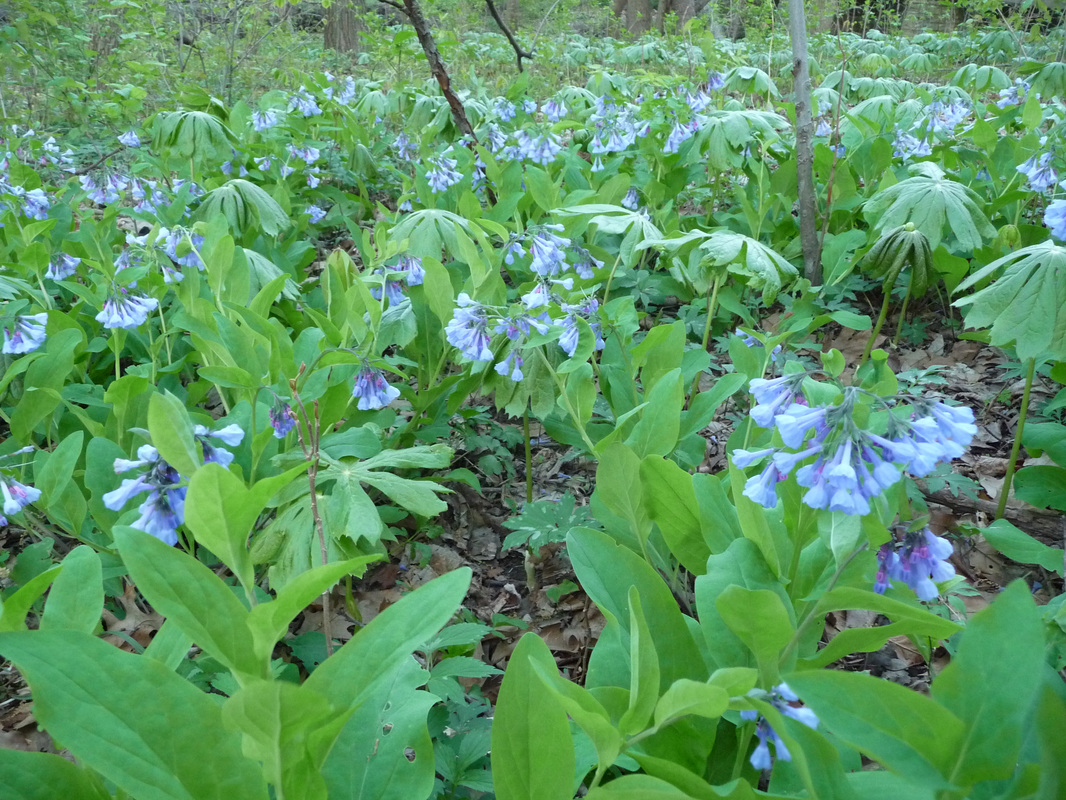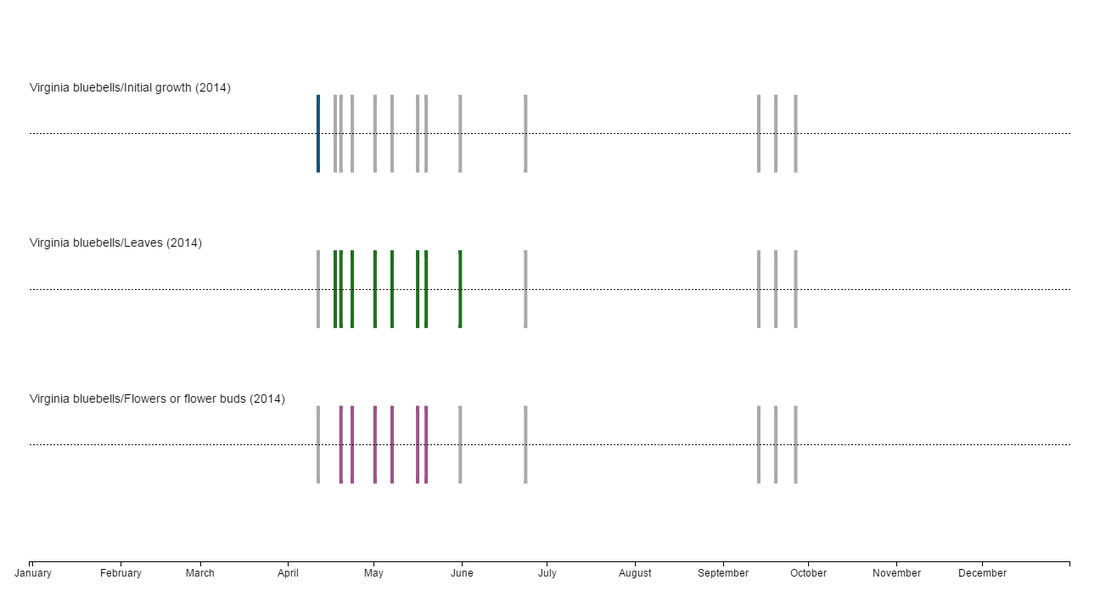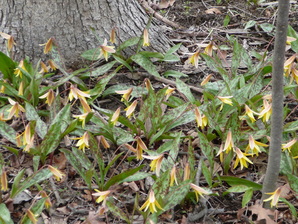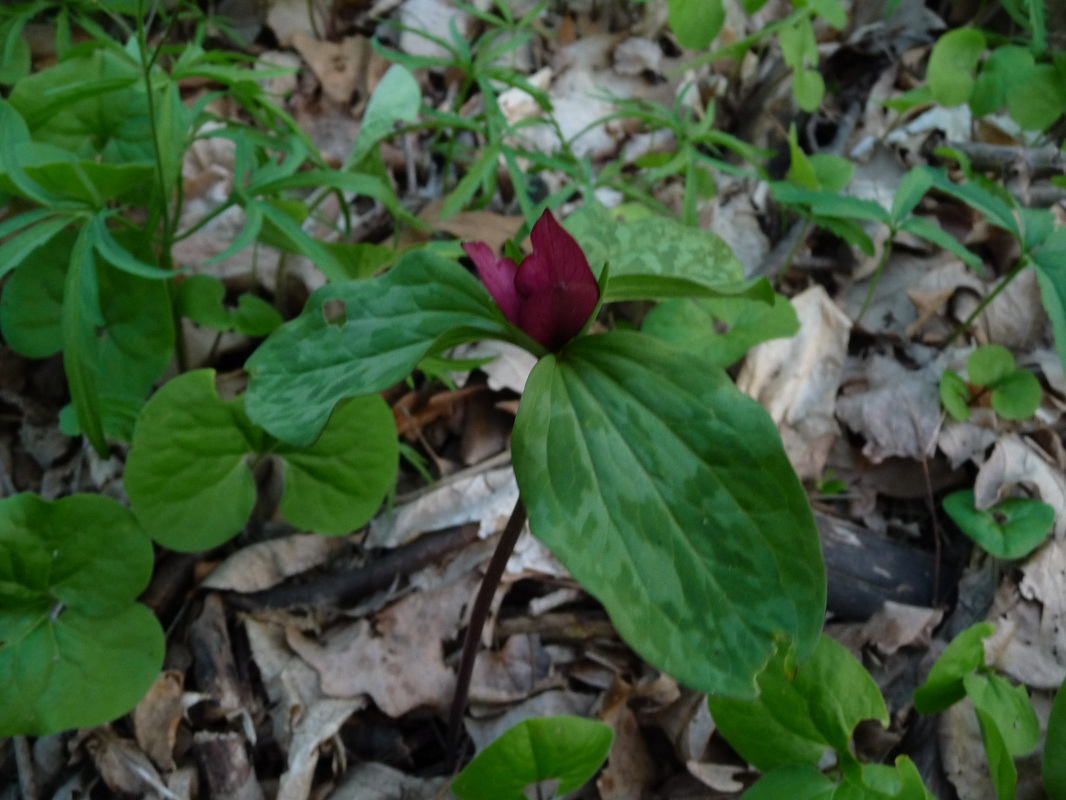|
It's the most wonderful time of the year! Wait, not Christmas, but that time of year when the spring wildflowers are blooming! The trees are only just beginning to show signs of spring when you can start to see industrious little plants in the forest understory bolting up out of the ground and starting to bloom. For many of these plants, their strategy is to grow quickly and soak up the spring sunshine before the trees above them leaf out and monopolize the sun. They grow, flower, produce seeds, and wilt all in short period of time. Take, for example, the Virginia bluebells (shown in the picture above intermixed with Mayapple). I've been tracking their phenology (seasonal changes) based on plants growing in my wildflower garden. Here's what I saw in 2014: The colored bars indicate an observation date when a particular stage (called a phenophase) was occurring, and the gray bars indicate an observation when that stage was not occurring. My bluebells started growing in early April, flowered shortly thereafter, and had wilted before July rolled around. Observing these seasonal changes can be a fun way to get to know your plants. What does it look like when it's first emerging from the ground, before the leaves have even started to open? What do fruits and seeds look like, and how can you tell if they are ripe? The graph above was generated by Nature's Notebook, a citizen science project where you can enter data on the phenology of plants and animals that you observe. This project not only allows you to document your observations to reflect upon later, but the information you collect also contributes to a growing data set that can be used for scientific research. Check it out, and see what species you might be able to observe near you! Another interesting citizen science project that I heard about recently involves the American trout lily. This species varies in the color of its pollen, and although this has long been known, apparently no one has really looked into it before. If you have this species near you, you can make observations about whether the pollen is brick red, lemon yellow, or somewhere in between and submit your findings online as part of the Trout Lily Project.
What a blessing to be able to take a walk through the woods and enjoy these little wonders of God's creation!
0 Comments
Leave a Reply. |
Abbie SchrotenboerI'm a biology professor at Trinity Christian College. I'll be using this page to share interesting stories related to ecology and conservation at Trinity and in the Chicago area (although I might be tempted to expand my geographic focus upon occasion). Archives
December 2020
Categories |




 RSS Feed
RSS Feed
